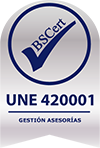
Updated: 19/05/25
Implementing an efficient financial control system is one of the pillars of sustainable growth in any SME. Not only does it allow decisions to be made based on real data, but it also optimises profitability, anticipates risks and professionalises business management. At Lever, as experts in financial consultancy for companiesWe explain how to carry out this implementation in an effective, structured way, aligned with best practice in the field. business controller.
Phase 1: Initial diagnosis and analysis
The first essential step is to carry out a analysis of the current financial situation of the company. This includes:
- Review of the accounting plan and of the cost allocation system.
- Evaluation of the CASH FLOWemissions, indebtedness, margins and profitability.
- Analysis of the quality and frequency of current financial reporting.
Objective: to detect shortcomings, duplication, charging errors or lack of budgetary control.
Phase 2: Defining key financial KPIs
The key performance indicators (KPIs) allow real-time monitoring of the company's financial health. The most recommended for an SME include:
- EBITDA and EBITDA margin
- Operating Cash Flow
- Liquidity ratio y capital adequacy ratio
- Average collection and payment period
- Return on sales and on equity
Each KPI should be linked to a strategic and operational objective. As finance director or controllerIt is key to determine which indicators are really relevant for decision making in each business model.
Phase 3: Implementation of financial control tools
Once the indicators have been defined, the next step is the automation y systematisation of control. Key tools may include:
- Financial dashboards customised with software such as Power BI, Tableau or Looker Studio.
- Integrated ERP systems that collect accounting, tax and operational data (e.g. Business Central, Odoo or Holded).
- Annual budgets and forecasts with monthly monitoring tools.
- Dashboards for partners and management.
Recommendation: start with agile and adaptable tools that allow you to scale as your business grows.
Phase 4: Training and financial literacy
It is not enough to implement tools; the team must understand the usefulness of financial information. This means:
- Basic training in interpretation of reports and KPIs.
- Regular budget review meetings.
- Alignment between departments to ensure data traceability.
A good financial control depends not only on the financial area, but also on the data-driven management culture.
Common errors in SME financial control
Throughout our experience as financial consultants, we have detected patterns of error that seriously affect the effectiveness of control:
- Confusing accounting with financial controlAccounting is for recording; control is for analysing and deciding.
- Lack of knowledge of the real costswithout a costing system by activity or responsibility centre, it is impossible to optimise.
- Lack of budgetary foresight and monitoringIt is not just a question of budgeting, but of monitoring it month by month.
- Delegate all financial control to third partiesThe accounting advisor does not replace the CFO or internal or external controller.
- Use of Excel without structure and version controlcheap can be very expensive if the reliability of the data is not guaranteed.
Conclusion
A well-designed and implemented financial control system is an essential tool for SMEs looking to grow safely and profitably. At Lever we offer services of financial consultancy for companiesacting as financial director or external controller to help our clients implement such solutions with a strategic, technical and operational approach.




